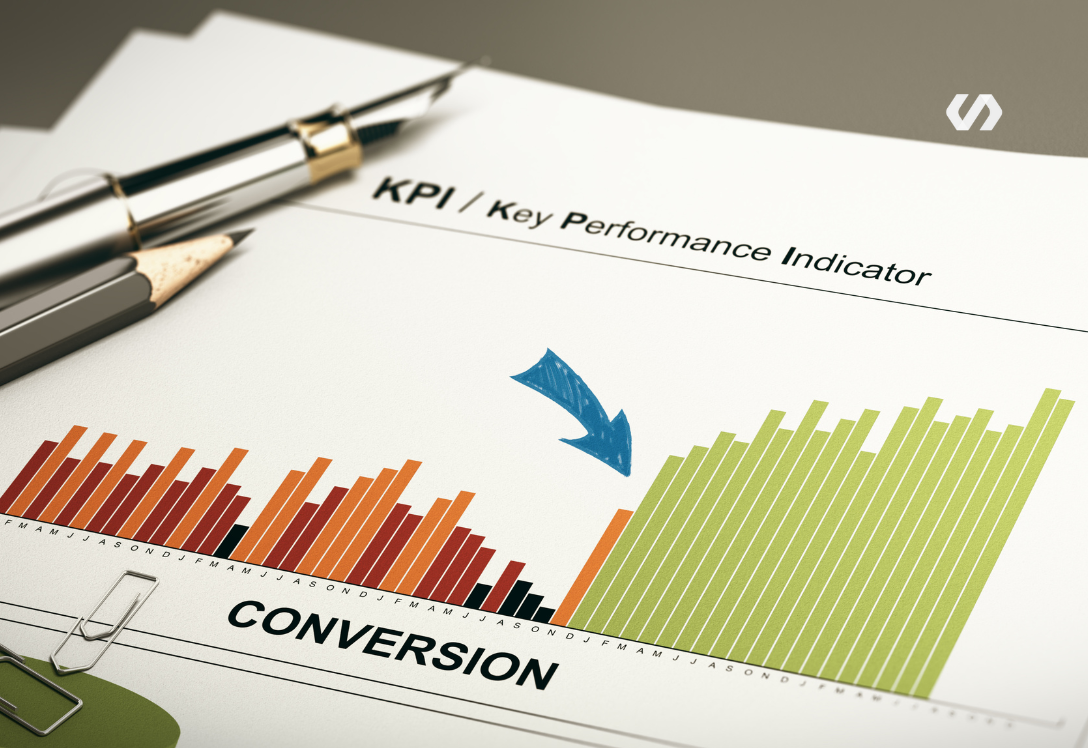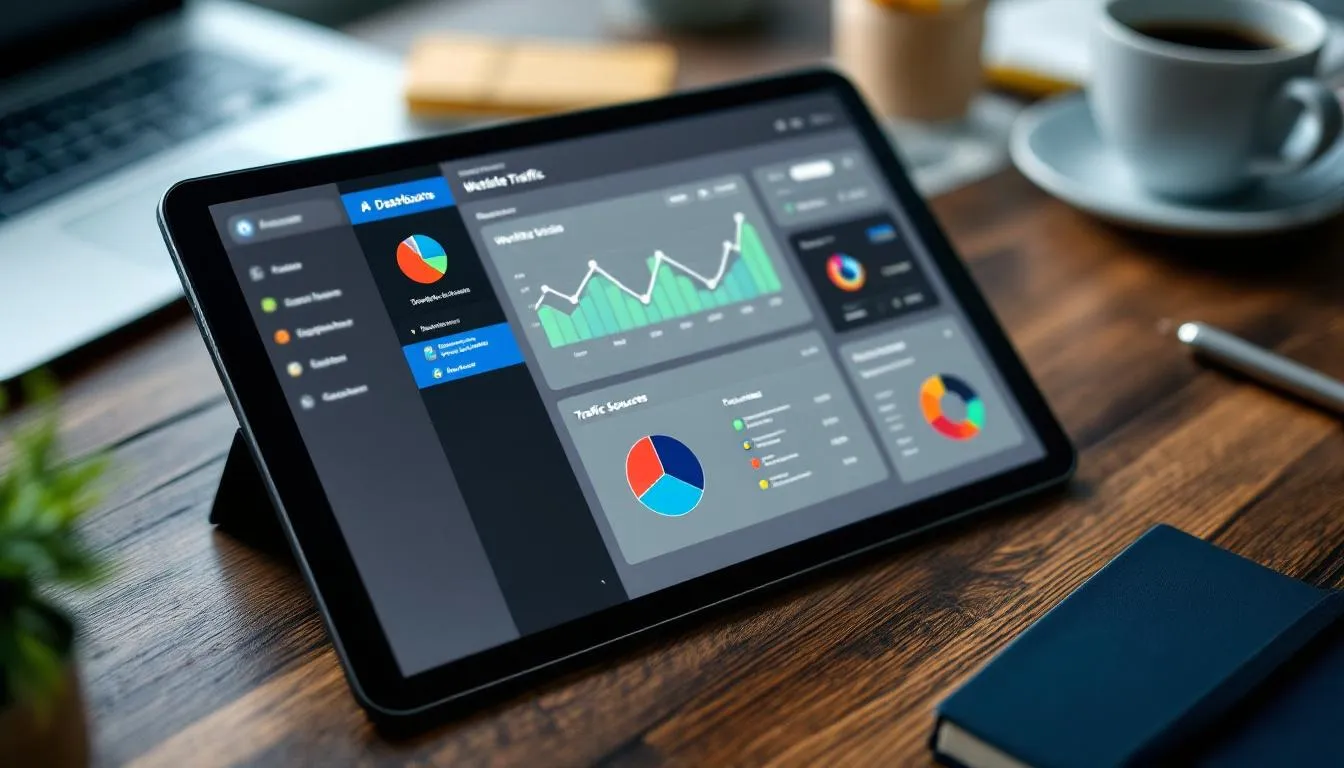Your website looks great. The design is modern, the copy sounds professional, and you’ve even got decent traffic numbers. But here’s the problem: the people finding your site aren’t the people who actually buy from you.
You’re attracting curious browsers instead of serious buyers. Students researching for assignments instead of business owners ready to invest. Tire-kickers from other countries instead of local customers who can actually visit your Brunei location. Your analytics show thousands of visitors, but your phone isn’t ringing with qualified leads.
This isn’t a traffic problem. It’s an audience alignment problem. Your website is optimized for search engines and generic visitors, but not for the specific people who need your services and have the authority to buy them. The good news? This is completely fixable once you understand why it happens and what to do about it.
Website Not Getting Quality Leads: Key Takeaways
Traffic volume means nothing if it’s the wrong audience visiting your website
Generic SEO targeting attracts broad audiences instead of qualified prospects
Audience alignment requires understanding searcher intent, not just search volume
Local business targeting needs different strategies than national or global optimization
Content and technical optimization must work together to attract the right visitors
Conversion-focused metrics matter more than vanity traffic numbers
The Real Problem: You’re Optimizing for Everyone (Which Means No One)
Why Generic SEO Attracts the Wrong Visitors
Most websites make the same fundamental mistake: they optimize for popular keywords with high search volume instead of focusing on the elements of a successful lead generation strategy. This approach fills your analytics with impressive numbers but empty sales pipelines.
Here are some common ways to attract the wrong visitors:
Common targeting mistakes:
Broad industry keywords that attract researchers, not buyers
Generic location terms that pull in irrelevant geographic audiences
Feature-focused content instead of benefit-driven messaging
Academic or educational language that appeals to students, not business decision-makers
The result: Your website ranks well for searches that don’t convert into business or help to generate leads.
Understanding Searcher Intent vs. Search Volume
High search volume doesn’t equal high business value. The keywords with the most searches are often the least commercial, attracting people in research mode rather than buying mode.
If you want to attract quality leads, focus on intent over volume.
Search intent categories:
Informational intent: People learning about topics (high volume, low conversion)
Commercial intent: People comparing solutions (medium volume, better conversion)
Transactional intent: People ready to buy (lower volume, high conversion)
Local intent: People seeking nearby services (focused volume, highest conversion)
You need to identify which intent matches your business goals to maximize your results.
For Brunei businesses, this means:
“Digital marketing” attracts students and researchers
“Digital marketing services Brunei” attracts local prospects
“Digital marketing agency Bandar Seri Begawan” attracts ready buyers
“Help grow my business online Brunei” attracts people with commercial intent
Effective search engine optimization requires targeting commercial intent keywords.
Why Your Current Audience Targeting Isn’t Working
Competing in the Wrong Keyword Space
Many businesses try to compete for the same broad keywords as international companies, which leads to several problems. If you’re not targeting the right keywords, you won’t reach your ideal audience:
Geographic mismatch: Ranking for “business consulting” attracts global traffic that can’t use local services
Budget mismatch: Competing against companies that can pay more per click or invest more in content. You don’t have the same budget as international competitors, making it harder to keep up.
Intent mismatch: Broad terms attract people at different stages of the buying process. You don’t attract buyers if your keywords are too broad.
Authority mismatch: Established international brands have more domain authority for generic terms. If you don’t have a strong local presence, it’s hard to compete.
Ignoring Local Search Behavior
Brunei businesses often overlook how their local market actually searches for services, focusing instead on how they think people should search.
Local search patterns:
Code-switching between English and Malay in searches
Specific location references beyond just “Brunei”
Industry-specific local terminology that differs from international usage
Mobile-first search behavior with location-aware queries
A strong user experience tailored to local preferences increases engagement and ensures your website is intuitive and accessible for local users. Understanding local search behavior helps you retain each account by meeting their specific needs and building lasting client relationships.
Misunderstanding Your Customer’s Search Journey
Your ideal customers don’t search the same way at every stage of their journey. Generic optimization misses the nuanced ways people seek solutions.
Early stage searches: Problem-focused, educational
Middle stage searches: Solution comparison, provider research
Late stage searches: Specific business names, contact information, reviews
How can you better align your content with each stage of the search journey?
How to Attract Your Actual Target Audience
Identify Your Real Ideal Customer Profile
Before optimizing for any keywords, get crystal clear on who you actually want to reach.
For Brunei service businesses, consider:
Business size: SMEs vs. large enterprises vs. startups
Industry focus: Which sectors actually buy your services
Geographic scope: Specific districts, regions, or all of Brunei
Decision-maker level: Business owners vs. marketing managers vs. operations staff
Budget capacity: Services they can afford and are willing to pay for
Practical exercise: One of the most effective ways to identify your ideal customer is to look at your best 10 customers from the past year. What do they have in common? How did they find you? What terms might they have searched before discovering your business?
Research How Your Audience Actually Searches
Stop guessing about keywords and start researching how your ideal customers actually look for solutions. Understanding how your audience searches is crucial for generating leads.
Research methods:
Customer interviews: Ask existing clients how they searched before finding you
Sales conversation analysis: Review what prospects mention during calls
Local market research: Understand regional business terminology and pain points
Competitor analysis: See who’s ranking for terms that bring qualified traffic
Tools for Brunei businesses:
Google Search Console: See which searches currently bring you traffic
Google Keyword Planner: Research local search volumes and related terms
Answer the Public: Discover question-based searches in your industry
Local Google searches: Test searches yourself from Brunei locations
Target Commercial Intent Keywords
Shift focus from informational keywords to commercial and transactional ones that indicate buying intent.
Commercial intent indicators:
“Best [service] in Brunei”
“[Service] company near me”
“How much does [service] cost”
“[Service] provider Bandar”
“Hire [professional] Brunei”
Local commercial modifiers:
“Brunei [service]”
“[Service] Bandar Seri Begawan”
“Local [service] provider”
“[Service] company KB” (Kuala Belait)
“[Service] Seria” or other specific locations
Optimize for Local Search Intent
Make your website irresistible to local searchers who can actually become customers.
Local optimization strategies:
Location-specific landing pages for different districts you serve
Local business schema markup to help search engines understand your service areas
Brunei-specific content that addresses regional business challenges
Local keyword integration that feels natural and helpful
Include clear calls to action on local landing pages to guide visitors toward contacting you or booking your services
Content localization:
Reference local business environments and challenges
Use examples from Brunei industries and markets
Address specific regulations or market conditions
Include local landmarks and geographic references appropriately
Technical Optimization for Audience Targeting
Geographic Targeting Settings
Configure your website to prioritize the right geographic audience.
Google Search Console settings:
Country targeting: Set to Brunei if you primarily serve local clients
Language targeting: Optimize for English with local terminology considerations
Regional search preferences: Monitor how you appear in local vs. international searches
Mobile Optimization for Local Searches
Most local searches happen on mobile devices, often with immediate intent to contact or visit.
Mobile-first optimizations:
Click-to-call phone numbers prominently displayed
Easy-to-find contact information above the fold
Location and directions easily accessible
Mobile-friendly contact forms with minimal required fields
Site Structure That Guides the Right Visitors
Organize your website to help qualified prospects find relevant information quickly while eliminating barriers that confuse or frustrate your target audience.
Audience-focused structure:
Clear service categorization that matches how customers think about solutions
Industry-specific landing pages for different client types
Local service area pages for geographic targeting
Case studies and testimonials from similar businesses in your target market
Intuitive navigation that guides visitors toward conversion actions
Need help with a complete website overhaul? Digital Sage’s website development services create SEO-ready sites designed specifically for audience targeting and conversion optimization from day one.
Content Strategy for Audience Alignment
Create Content That Speaks to Buying Intent
Develop content that addresses the questions and concerns of people ready to make decisions. Your content should be designed to generate leads by directly addressing buyer intent and providing clear, actionable information.
High-intent content types:
Service comparison guides that position your offerings favorably
Local market insights that demonstrate expertise in Brunei business conditions
ROI and pricing information that helps prospects evaluate investments
Implementation timelines and process explanations for serious buyers
Address Local Market Pain Points
Create content that specifically addresses challenges facing Brunei businesses.
Brunei business content angles:
Regulatory compliance and local business requirements
Small market dynamics and growth strategies
Regional competition and differentiation approaches
Local partnership and networking opportunities
Use Language Your Audience Actually Uses
Match the terminology and communication style of your ideal customers.
Language considerations:
Industry-specific terminology that demonstrates expertise
Local business context that shows market understanding
Decision-maker language rather than academic or generic corporate speak
Problem-focused framing that resonates with business challenges
Measuring and Improving Audience Quality
Track Conversion-Focused Metrics
Stop celebrating traffic that doesn’t convert and start measuring audience quality.
Quality metrics to monitor:
Lead generation rate from organic traffic
Contact form submissions vs. total visitors
Phone call volume from website traffic
Consultation booking rate for service businesses
Geographic quality indicators:
Local traffic percentage vs. international visitors
Brunei-specific search terms driving traffic
Time spent on service pages by local visitors
Contact rate from different geographic segments
A/B Testing for Audience Resonance
Test different approaches to see what resonates with your target audience.
Testing opportunities:
Headlines and value propositions that speak to different audience segments
Call-to-action language that motivates your specific market
Content depth and detail level appropriate for your audience
Local vs. generic messaging impact on engagement
Refining Based on Real Results
Use actual business outcomes to guide optimization decisions.
Data-driven refinements:
Keyword performance analysis: Which terms bring qualified leads vs. just traffic
Content performance review: What content leads to consultations or sales
User behavior analysis: How qualified prospects interact with your site differently
Conversion path mapping: How your best customers found and engaged with you
Common Audience Targeting Mistakes to Avoid
Chasing Vanity Metrics
Don’t get distracted by impressive traffic numbers that don’t translate to business results.
Copying International SEO Strategies
What works for global markets often fails in Brunei’s specific business environment.
Ignoring Mobile Local Search
Missing mobile optimization means missing most local search opportunities.
Over-Optimizing for Search Engines
Focusing too much on search algorithms instead of human visitors who actually buy.
Making the Shift: From Traffic to Qualified Visitors
Audit Your Current Traffic Quality
Start by understanding who’s actually visiting your website now and whether your current site architecture supports audience targeting.
Traffic quality audit:
Geographic analysis: Where are your visitors actually located?
Search term review: What keywords bring traffic vs. what brings leads?
Behavior analysis: How do visitors interact with key pages?
Conversion tracking: Which traffic sources lead to actual business?
Site performance review: Does your current website structure support audience targeting goals?
Need help calculating whether a website redesign makes financial sense? Use our free Website Redesign ROI Calculator to determine the potential business impact of optimizing your site for better audience targeting.
Implement Audience-First Optimization
Redesign your SEO strategy around attracting the right people, not just more people. This might require technical website improvements to support better audience targeting.
Implementation steps:
Identify your most valuable customer segments
Research how they actually search for solutions
Optimize content for commercial and local intent
Ensure your website architecture supports audience targeting
Monitor business outcomes, not just traffic metrics
Need help implementing these changes? If your current website wasn’t built with audience targeting in mind, our SEO-ready website development services can create a foundation designed specifically for attracting and converting your ideal customers.
Create Systems for Ongoing Improvement
Build processes to continuously improve audience targeting.
Ongoing optimization:
Monthly traffic quality reviews with business outcome analysis
Quarterly keyword strategy updates based on customer feedback
Regular content audits to ensure audience alignment
Conversion optimization testing for better prospect engagement
Conclusion
Getting the right visitors to your website isn’t about generating more traffic. It’s about being strategic with who you’re trying to reach and how you’re reaching them. When you optimize for your actual ideal customers instead of generic search volumes, everything changes. Your analytics might show fewer visitors, but your phone will ring more often with qualified prospects.
For Brunei businesses, this means understanding how your local market searches, what language they use, and what motivates them to take action. Stop competing with international companies for broad keywords you’ll never win. Start dominating the specific searches your ideal customers actually make.
The businesses succeeding online aren’t the ones with the most website traffic. They’re the ones attracting the right traffic from people who need their services, can afford them, and are ready to buy. Make that shift, and watch your website start working as the business development tool it’s supposed to be.
FAQs
My website gets decent traffic but few leads. Should I redesign or just optimize what I have? A: Start with our Website Redesign ROI Calculator to determine whether the investment in a complete redesign would be worth it based on your current conversion gaps. Sometimes audience targeting requires fundamental structural changes that are easier to implement with a fresh build.
How do I know if my website architecture supports good audience targeting? A: If your site was built primarily for design appeal rather than conversion optimization, or if it’s more than 3 years old without major updates, it likely needs structural improvements to support modern audience targeting strategies.
How do I know if my website is attracting the wrong audience? A: Look at your conversion rates and lead quality. If you have high traffic but low inquiry rates, or if your consultations don’t lead to sales, you’re likely attracting browsers instead of buyers.
Should I completely ignore high-volume keywords? A: Not completely, but prioritize commercial intent keywords that indicate buying readiness. Use high-volume informational keywords strategically to build authority, but focus conversion optimization on commercial terms.
How long does it take to see results from audience targeting changes? A: Expect 2-4 months to see significant improvements in traffic quality and lead generation. The initial traffic numbers might decrease as you focus on qualified visitors, but conversion rates should improve.
Is local SEO enough for Brunei businesses? A: Local SEO is crucial but combine it with industry-specific and commercial intent optimization. You want to be found by the right people locally, not just anyone locally.
How do I balance SEO with audience targeting? A: Focus on keywords that serve both purposes: terms your ideal audience uses that also have reasonable search volume. Commercial intent keywords often provide this balance.
Ready to Start Attracting Your Ideal Customers?
Transform your website from a traffic generator into a qualified lead magnet. Digital Sage helps Brunei businesses optimize for the visitors who actually convert into customers, not just impressive analytics numbers.
Not sure if you need optimization or a complete redesign? Start with our free Website Redesign ROI Calculator to assess the potential business impact of improving your audience targeting.
Ready for a new approach? Our SEO-ready website development services create sites designed from the ground up for audience targeting and conversion optimization.
Schedule a 30-minute website audit to discover why your current traffic isn’t converting and develop a strategy for attracting prospects who are ready to buy from you.




